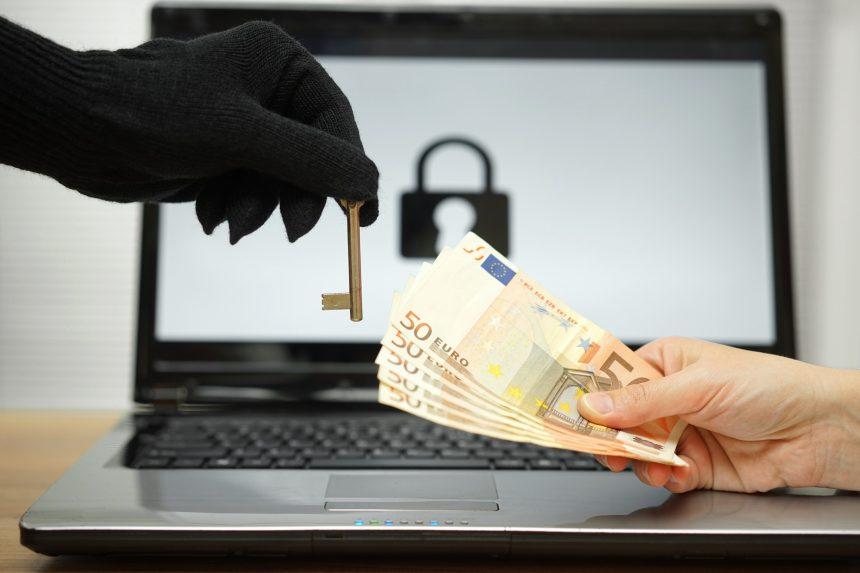Ransomware remains one of the most menacing adversaries to individuals and organizations alike. Among the latest additions to this malicious arsenal is RansomHub ransomware. This insidious malware variant operates with the sole intent of encrypting valuable files and extorting victims for financial gain. Understanding its modus operandi, detecting its presence, and effectively removing it are crucial steps in combating this digital menace.
Actions and Consequences
RansomHub ransomware employs sophisticated encryption algorithms to lock victims out of their own files, rendering them inaccessible. Once the encryption process is complete, a ransom note typically appears on the victim’s screen, demanding payment in exchange for the decryption key. The consequences of falling victim to RansomHub can be severe, ranging from financial losses due to ransom payments to irreversible data damage or loss.
The ransom note that victims of the RansomHub Ransomware will receive reads:
‘Hello!
Visit our Blog:
Tor Browser Links:
hxxp://ransomxifxwc5eteopdo****************ifu2emfbecgbqdw6qd.onion/
Links for normal browser:
hxxp://ransomxifxwc5eteopdo****************ifu2emfbecgbqdw6qd.onion.ly/
>>> Your data is stolen and encrypted.
– If you don’t pay the ransom, the data will be published on our TOR darknet sites. Keep in mind that once your data appears on our leak site, it could be bought by your competitors at any second, so don’t hesitate for a long time. The sooner you pay the ransom, the sooner your company will be safe.
>>> If you have an external or cloud backup; what happens if you don’t agree with us?
– All countries have their own PDPL (Personal Data Protection Law) regulations. In the event that you do not agree with us, information pertaining to your companies and the data of your company’s customers will be published on the internet, and the respective country’s personal data usage authority will be informed. Moreover, confidential data related to your company will be shared with potential competitors through email and social media. You can be sure that you will incur damages far exceeding the amount we are requesting from you should you decide not to agree with us.
>>> Don’t go to the police or the FBI for help and don’t tell anyone that we attacked you.
– Seeking their help will only make the situation worse,They will try to prevent you from negotiating with us, because the negotiations will make them look incompetent,After the incident report is handed over to the government department, you will be fined ,The government uses your fine to reward them.And you will not get anything, and except you and your company, the rest of the people will forget what happened!!!!!
>>> How to contact with us?
– Install and run ‘Tor Browser’ from hxxps://www.torproject.org/download/
– Go to hxxp://h6tejafqdkdltp****************seslv6djgiukiii573xtid.onion/
– Log in using the Client ID: –
>>> WARNING
DO NOT MODIFY ENCRYPTED FILES YOURSELF.
DO NOT USE THIRD PARTY SOFTWARE TO RESTORE YOUR DATA.
YOU MAY DAMAGE YOUR FILES, IT WILL RESULT IN PERMANENT DATA LOSS.’
Detection Names and Similar Threats
Various security software vendors may identify RansomHub ransomware using different detection names, including but not limited to:
- Trojan-Ransom.Win32.RansomHub
- Win32/Filecoder.RansomHub
- Ransom:Win32/RansomHub.A
Similar threats to RansomHub include infamous ransomware strains like WannaCry, Ryuk, Maze, and REvil. These threats share common characteristics in their encryption techniques and ransom demands, posing significant risks to both individuals and organizations.
Removal Guide
Removing RansomHub ransomware requires a systematic approach to ensure complete eradication. Follow these steps carefully:
- Enter Safe Mode: Restart your computer and press F8 repeatedly before the Windows logo appears. Select “Safe Mode” from the boot menu.
- Identify Malicious Processes: Open Task Manager (Ctrl + Shift + Esc) and terminate any suspicious processes associated with RansomHub ransomware.
- Delete Temporary Files: Press Win + R, type “%temp%”, and press Enter. Delete all files in the temporary folder.
- Scan and Remove Malware: Utilize reputable antivirus software to perform a full system scan and remove any detected instances of RansomHub ransomware.
- Restore from Backup: If you have backup copies of your files, restore them to recover encrypted data. Ensure the backup is from a time before the infection occurred.
Prevention Best Practices
Preventing future infections requires a proactive approach to cybersecurity. Implement the following best practices to mitigate the risk of RansomHub ransomware and similar threats:
- Regular Backups: Maintain up-to-date backups of important files on external storage devices or cloud platforms.
- Security Software: Install reputable antivirus and antimalware software and keep it updated to detect and block ransomware threats.
- Email Security: Exercise caution when opening email attachments or clicking on links, especially from unknown or suspicious sources.
- Software Updates: Keep your operating system and software applications patched and up-to-date to address vulnerabilities exploited by ransomware.
- User Education: Educate yourself and your employees about the dangers of ransomware and how to recognize phishing attempts or suspicious behavior online.
By adopting these preventive measures and staying vigilant, you can fortify your defenses against RansomHub ransomware and safeguard your digital assets from exploitation.





